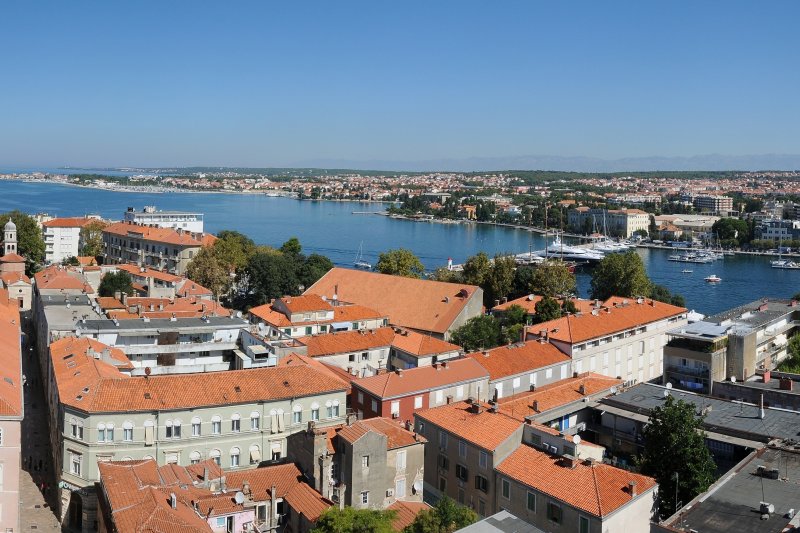 Panoramic view of Zadar, Croatia
Panoramic view of Zadar, CroatiaSource: https://commons.wikimedia.org/wiki/File:Zadar_Panorama_Nord.jpg
Author: Böhringer Friedrich

Zadar is a city on the Dalmatian coast of Croatia. It faces Zadar Strait, which is between mainland Croatia and the islands of Ugljan and Pašman, opening into the Adriatic Sea. Zadar covers 25 sq km (9.7 sq mi) and has a population of 75,000 (2011 estimate).
Zadar experiences a Mediterranean climate. The winters are mild and humid while the summers are dry and warm. Hottest months are July and August, when the average high temperature regularly touches 28°C (82.4°F). Coldest month is February, when the average low temperature drops to 4°C (39.2°F). November receives the most rain, at 91.6 mm (3.6 in).
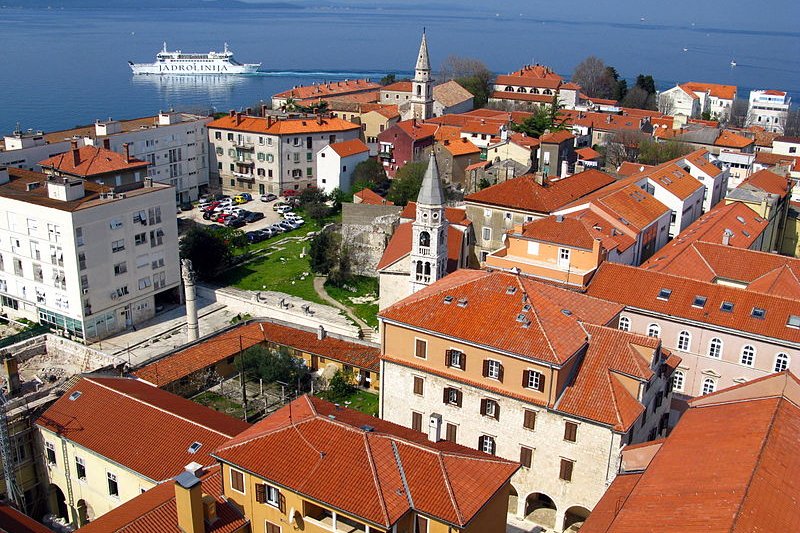 Zadar, Croatia, with view of the Cathedral of St. Anastasia
Zadar, Croatia, with view of the Cathedral of St. AnastasiaSource: https://commons.wikimedia.org/wiki/File:Zadar_Kathedrale_St._Anastasia_04.jpg
Author: Joadl

The history of Zadar is one of a city that was conquered and reconquered by powerful neighbors. The area around Zadar has been populated since prehistoric times. There was a Liburnian settlement here in the 9th century BC, and by the 7th century, the settlement has grown into a trading port with merchants from Phoenicia, Etruscia, ancient Greece and other parts of the Mediterranean visiting it. In 48 BC, Julius Caesar established a Roman colony in the area, and the city was given the title "colonia Iulia Iader", meaning "Julius's colony of Zadar".
With the fall of the Western Roman Empire in 481, Zadar and all the cities of Dalmatia became part of the Ostrogothic Kingdom. Under the Ostrogoths, Zadar slipped from significance. In 536, it was conquered by the Byzantine emperor Justinian the Great, and in 553 added to the Byzantine Empire.
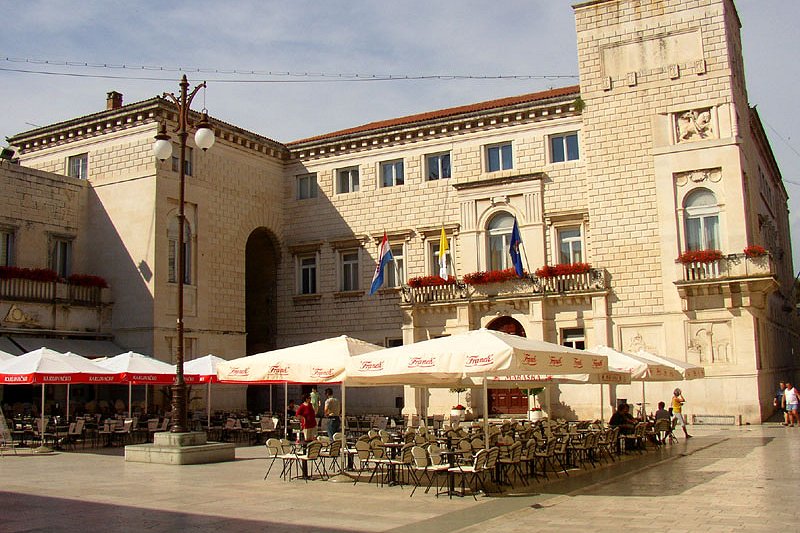 Zadar City Hall
Zadar City HallSource: https://commons.wikimedia.org/wiki/File:Zadar_vijecnica.jpg
Author: Maestralno

In the 9th century, Zadar was caught in a dispute between the Byzantine Empire and the Holy Roman Empire, resulting in the Franks occupying the city for a short time, before returning it to Byzantium in 812, through the Treaty of Aachen. By then Zadar has evolved into a fishing port. This however conflicted with the ambitions of a neighboring power, Venice.
When Zadar sought the help of Venice to defend it from Neretvian pirates in 998, the latter took the opportunity to occupy Zadar. Various cities of the Dalmatian coast ended up either being annexed or made a vassal state and forced to pay tribute to Venice.
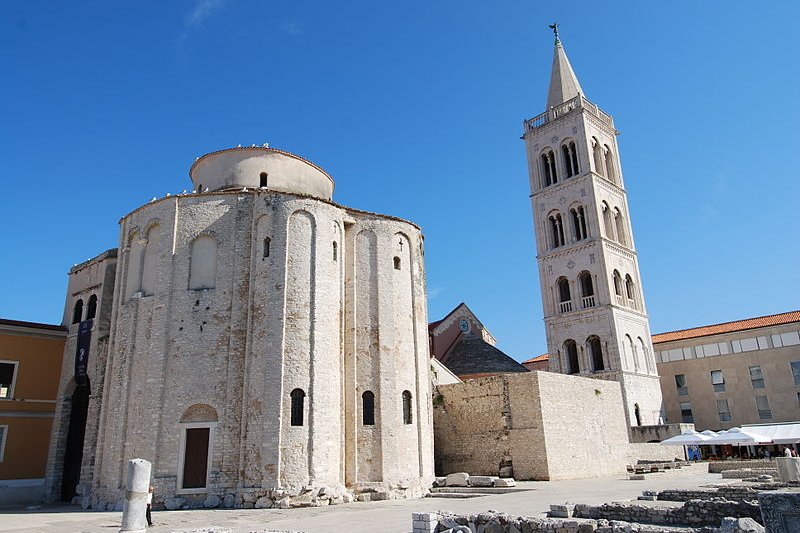 Church of St Donatus, Zadar
Church of St Donatus, ZadarSource: https://commons.wikimedia.org/wiki/File:St._Donatus%27_Church.jpg
Author: PJL

While still formally a vassal of the Byzantine Empire, Zadar had to also pay a tribute to Venice. Despite that, it was repeatedly attacked from Venice, from 111 to 1154 and again from 1160 to 1183, when it finally rebelled and sought protection from the Pope and the Croato-Hungarian Empire. In retaliation, Venice used the Crusaders to lay siege on Zadar and in 1202, ransacked and totally devastated it.
Zadar remained suppressed by Venice through the 13th and 14th century, although it did stage a number of insurrections until the one of 1345-1346 brought it out of Venice's grips and back under the crown of the Croatian-Hungarian king.
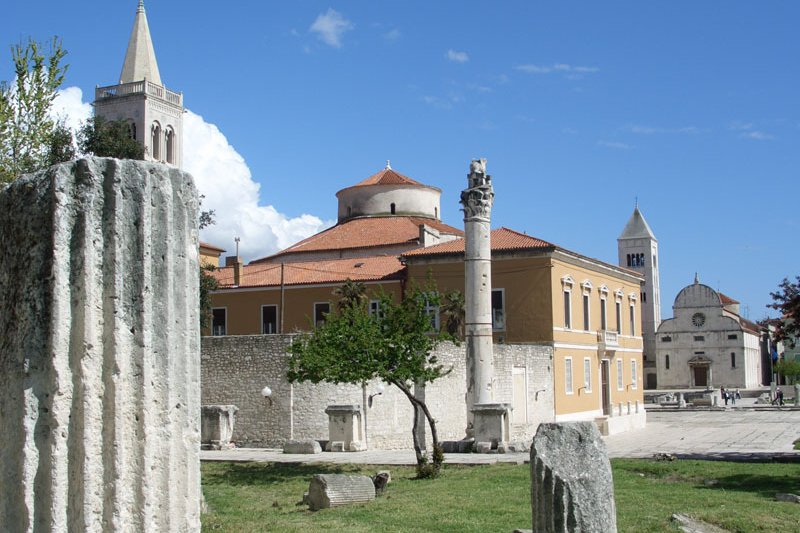 Roman Forum in Zadar
Roman Forum in ZadarSource: https://commons.wikimedia.org/wiki/File:Zadar_Forum.jpg
Author: Maestralno

By the 16th and 17th century, Zadar had to face repeated attacks by the Ottomans. As a result, it built a network of fortifications and city walls, changing the appearance of the city. But even in the face of Ottoman threats, behind the walls the city was flourishing in an era that produced a number of noted Croatian writers and poets.
At the beginning of the 19th century, Zadar was briefly part of the Kingdom of Italy under Napoleon. In 1813 it was reconquered returned to the Austro-Hungarian Empire. When the empire collapsed following the First World War, it was occupied by Italian troops. During the Second World War, it was invaded by the Nazis and added to the puppet state set up by Benito Mussolini, called the Independent State of Croatia. The city remained under Italian sovereignty until 1947, when it became part of Yugoslavia.
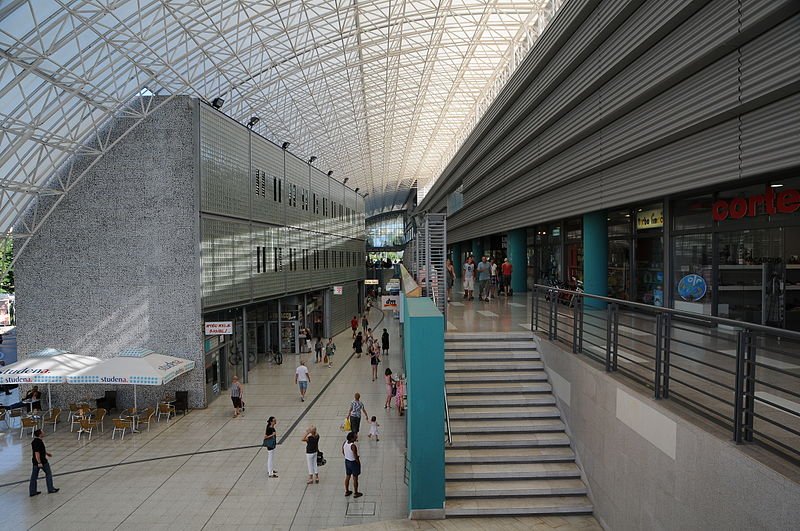 City Galleria, Zadar
City Galleria, ZadarSource: https://commons.wikimedia.org/wiki/File:City_Galleria_Zadar_05.JPG
Author: Böhringer Friedrich

When Yugoslavia disintegrated in the early 1990s, Zadar became part of the new Republic of Croatia. Its economy for a while suffered from the effects of the Yugoslav wars. It only began to grow again in the 21st century.
Visiting Zadar
The most practical way to reach Zadar is probably by bus from Zagreb (3 hours 30 min), Pula, Sibenik, Split or Dubrovnik.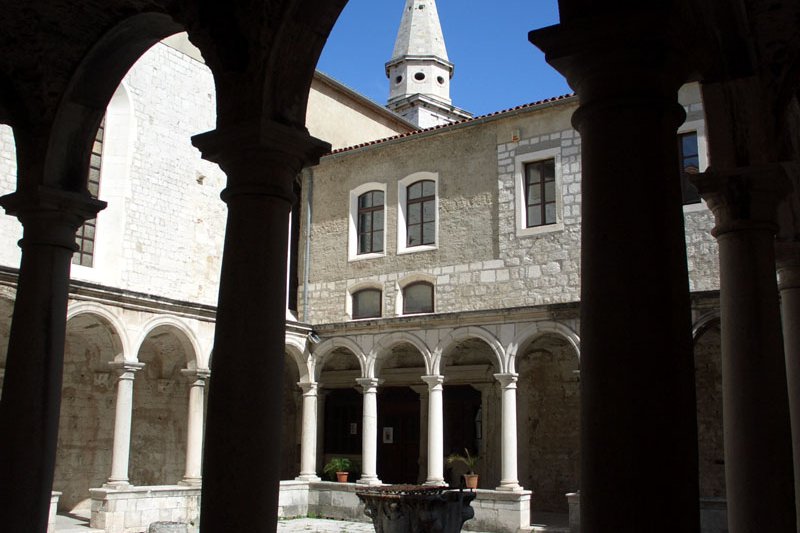 Monastery of St Francis of Assisi, Zadar
Monastery of St Francis of Assisi, ZadarSource: https://commons.wikimedia.org/wiki/File:Svfrane_zadar_1.jpg
Author: Maestralni

Places of Interest in Zadar
- Archaeological Museum
Museum showcasing the artifacts from Zadar and the surrounding islands. They include glass items from the Roman period and liturgical objects from the early Christian and Medieval periods. - Cathedral of St Anastasia (Katedrala Sv. Stošije)
Founded by the Byzantines in the 9th century, and rebuilt in the 12-13 centuries, this magnificent cathedral is located at the Roman Forum. - Church of St Chrysogonus (Sv. Krševan)
Present church dating from 1175 was built on the site of an earlier Benedictine church and monastery, which themselves occupied a former market place during Roman times. - Church of St Donatus (Sv. Donat)
Officially the Church of the Holy Trinity, this is one of the most outstanding examples of Byzantine-style churches in Dalmatia. - Church of St Mary and Museum of Sacred Art (Sv Marija i Zlato i Srebro Zadra)
11th century church with bell tower in front of the Zeleni square. Adjacent is a former monastery now housing the museum which showcases gold pieces, paintings and statues. - Church of St Simeon (Sv Šime)
Church built in 1632, on the site of an earlier Romanesque-style church. It houses the remains of the saint, kept in a silver reliquary. - City Galleria
Modern shopping mall in Zadar. - Land Gate and Walls (Kopnena Vrata)
This is the medieval entrance to Zadar, built in the 15th century by the great Veronese architect Michele Sanmicheli. - People's Square (Narodni trg)
Public square in the heart of the medieval part of Zadar. - Roman Forum
This is the main square of the Roman city of Jadera which dates back to the 1st century. - Sea Gate (Vrata Sv. Krševana)
Originally a Roman arch, this gate was a renovation carried out in the 16th century by the great architect Michele Sanmicheli. - Sea Organ
A unique musical instrument built into the quayside by architect Nikola Basic in 2005. The organ is played by waves pushing air through its pipes.
 Latest updates on Penang Travel Tips
Latest updates on Penang Travel Tips
Songs about Penang
About this website

Hello and thanks for reading this page. My name is Timothy and my hobby is in describing places so that I can share the information with the general public. My website has become the go to site for a lot of people including students, teachers, journalists, etc. whenever they seek information on places, particularly those in Malaysia and Singapore. I have been doing this since 5 January 2003, for over twenty years already. You can read about me at Discover Timothy. By now I have compiled information on thousands of places, mostly in Peninsular Malaysia and Singapore, and I continue to add more almost every day. My goal is to describe every street in every town in Malaysia and Singapore.
Copyright © 2003-2024 Timothy Tye. All Rights Reserved.


 Go Back
Go Back